Hello everyone!
Welcome to the next part of our Croatian tour, primarily the historical region of Dalmatia. Even though the city of Zadar was our base in this country, the first city I visited with my friends was Split. It wasn't a very long visit, lasting only about two hours. In that time, we only saw the most popular tourist area of the city.
[ PL ]
Witam wszystkich!
Zapraszam do kolejnej części zwiedzania Chorwacji, głównie historycznej krainy jaką jest Dalmacja. Pomimo tego, że miasto Zadar był naszą bazą noclegową w tym kraju, to pierwszym miastem jakie zwiedzałem z przyjaciółmi był Split. Nie była to zbyt długa wizyta, bo trwała zaledwie ok 2 godzin. W takim czasie mogliśmy zobaczyć tylko część miasta, tę najbardziej popularną turystycznie.
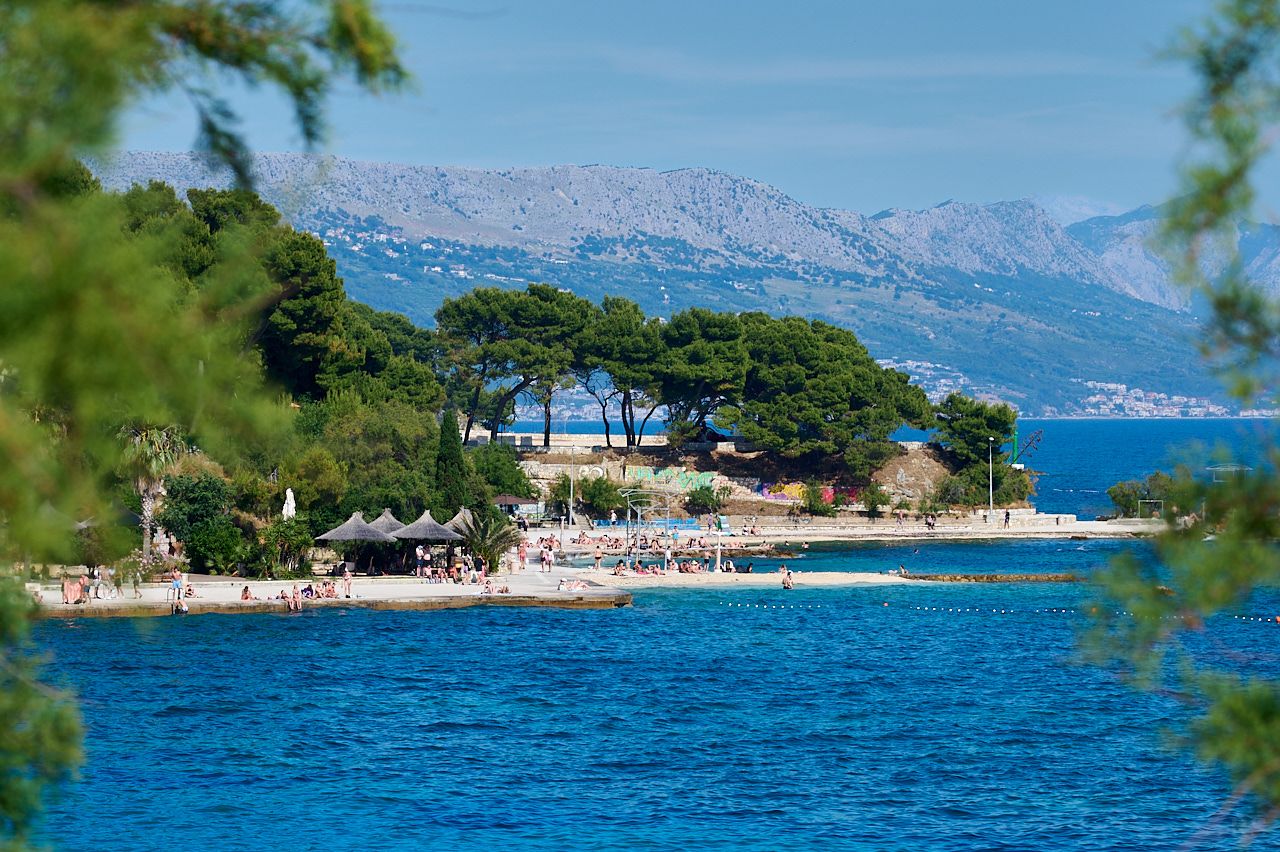
The city of Split is situated on a small peninsula with beaches on its southern shore. From the parking lot to the old town, we walked past Bačvice Beach in a small bay.
Miasto Split położone jest na małym półwyspie z plażami na południowym brzegu. Z parkingu do starego miasta przechodziliśmy obok plaży Bačvice w małej zatoce.
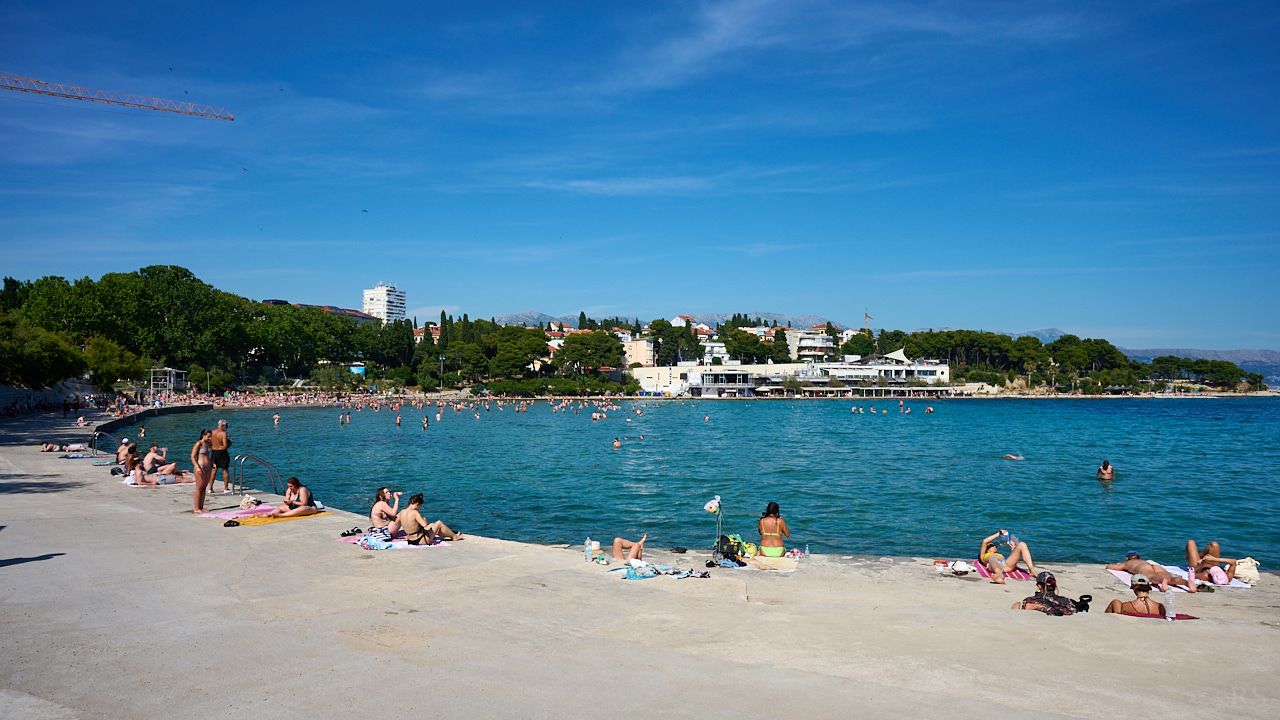
In addition to the sandy beach, people also occupy the concrete part of this small bay. This place is located on the eastern side of the port near the old town.
Poza piaszczystą plażą ludzie zajmują również betonową część tej małej zatoki. Miejsce to leży od wschodniej strony portu przy starym mieście.
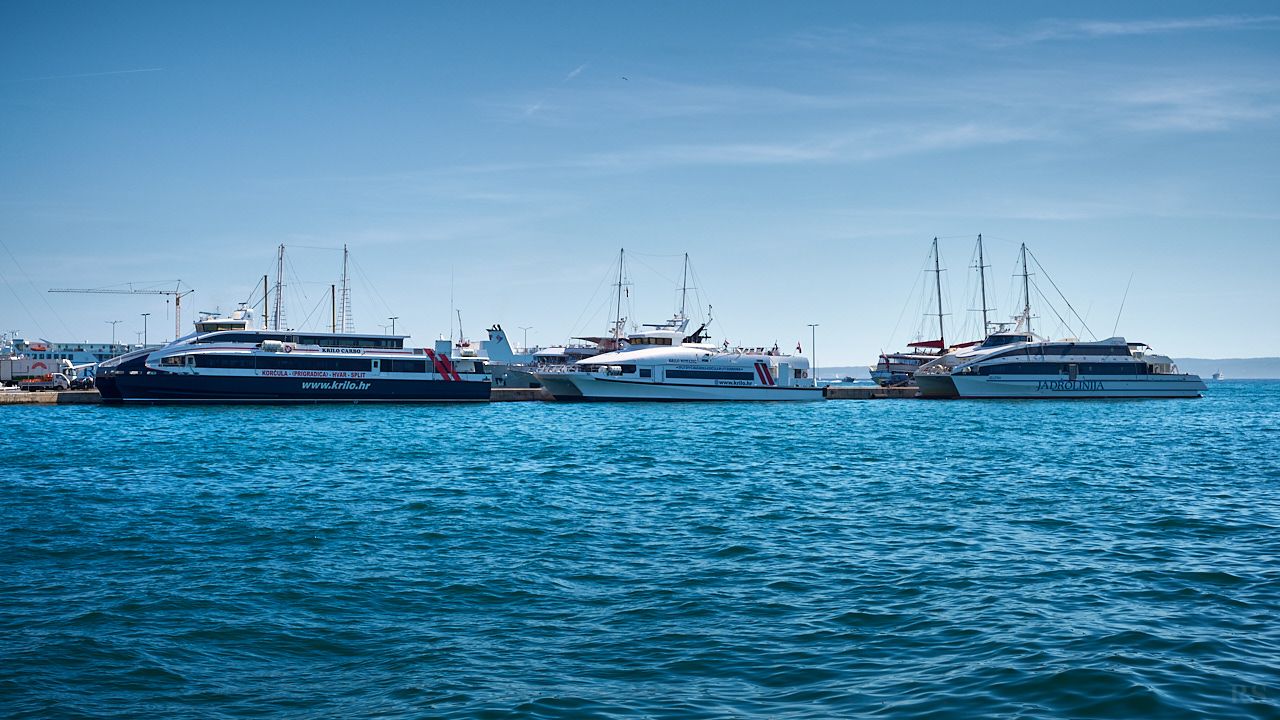
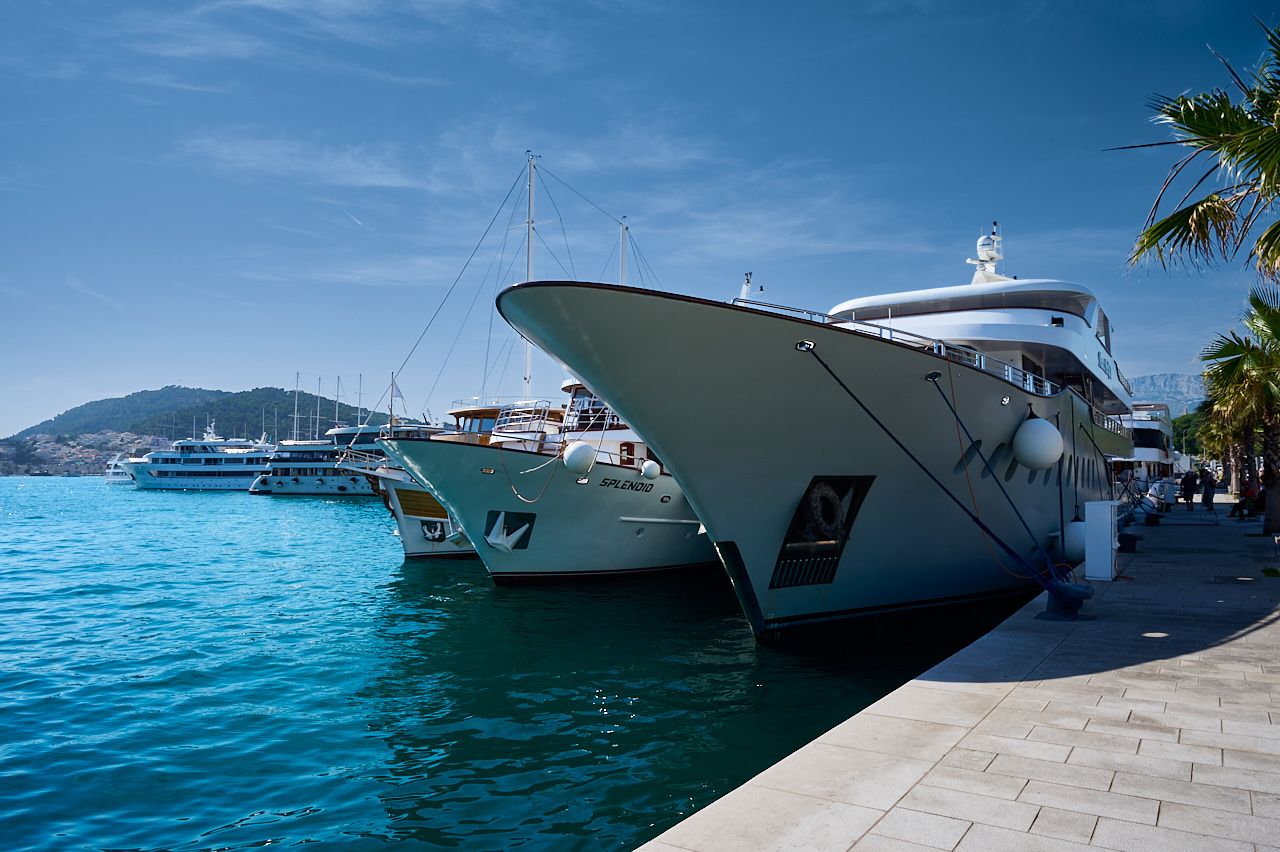
There are many different ferries, cruise ships and other boats and yachts moored in the port itself.
W samym porcie zacumowanych jest sporo różnych promów, wycieczkowców oraz innych łodzi i jachtów.
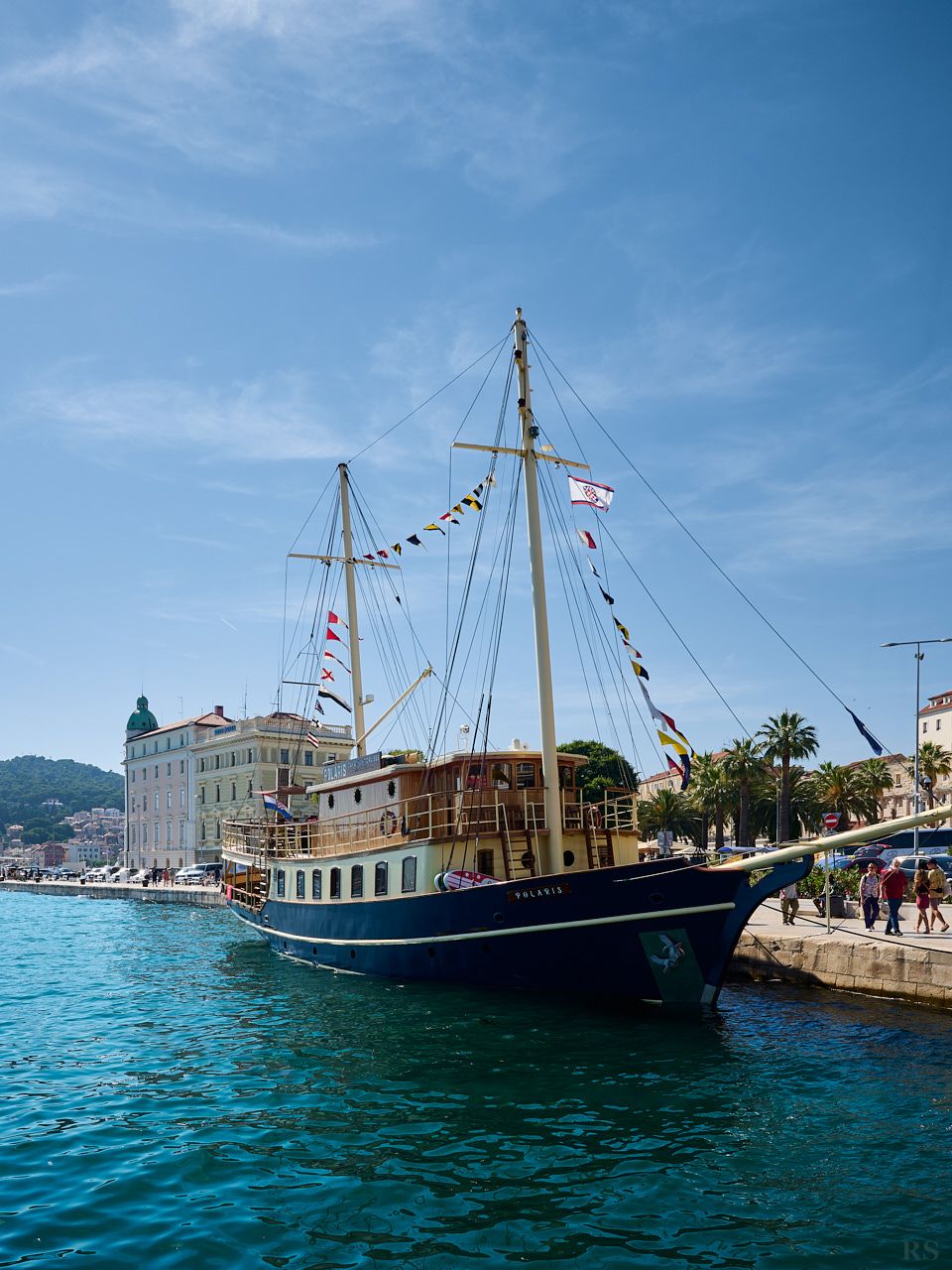
However, our main purpose in visiting Split was its old town.
Jednak naszym głównym celem zwiedzania Splitu było jego stare miasto.
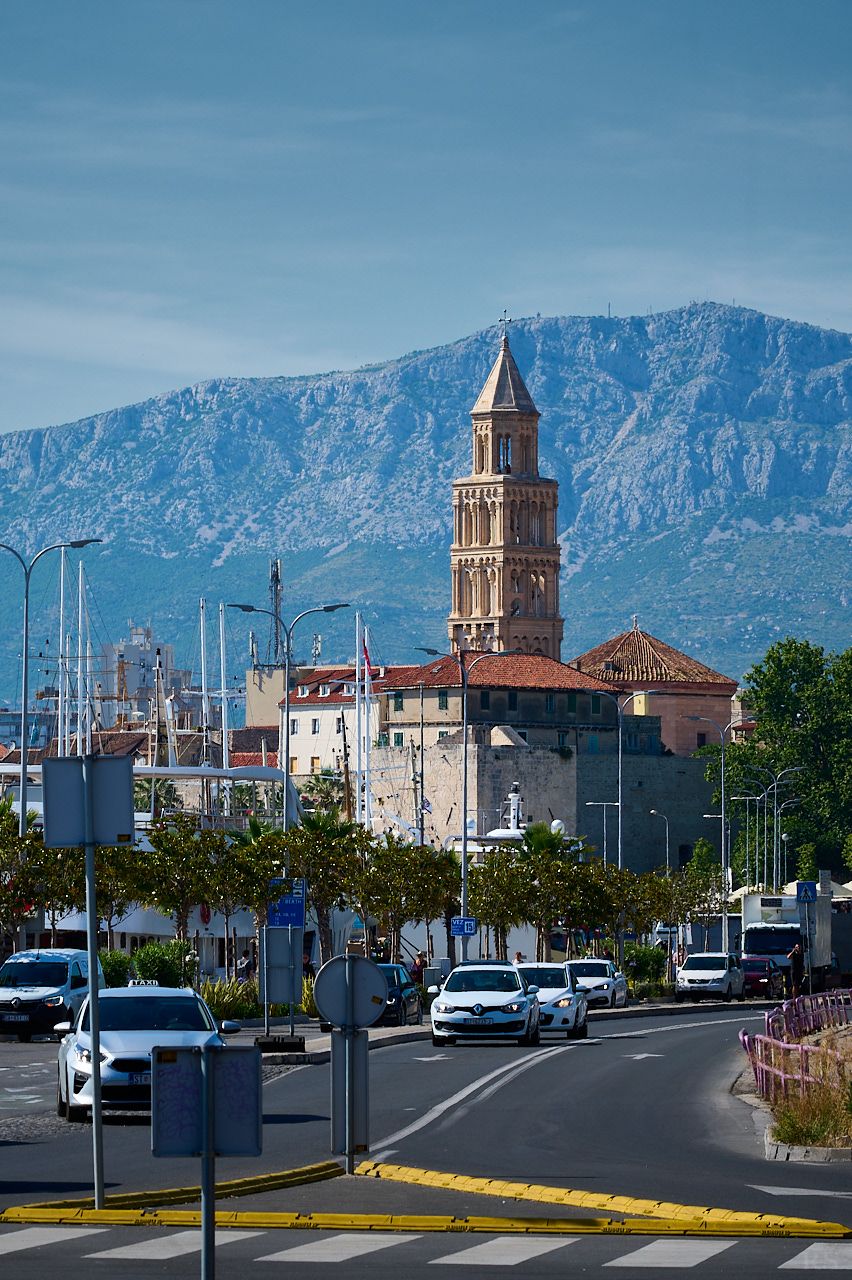
View from Obala kneza Domagoja Street of the southeastern part of the old town, with the prominent tower of the Cathedral of St. Domnius. In the background are the mountains north of the city.
Widok z ulicy Obala kneza Domagoja na południowo-wschodnią część starego miasta z wyróżniającą się wieżą Katedry św. Duje. W tle góry znajdujące się na północ od miasta.
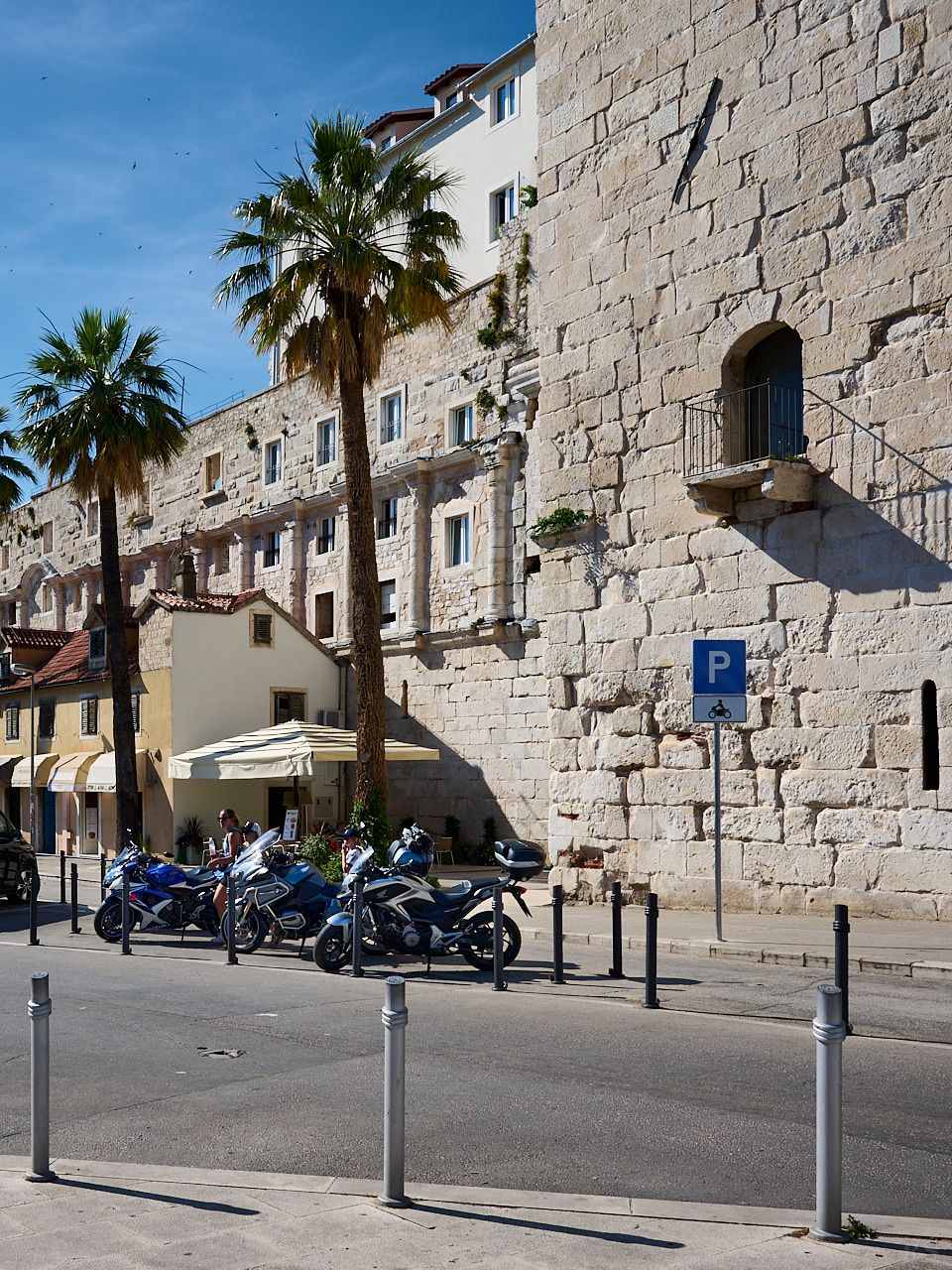
The historic walls of the old city, with one of the towers at Diocletian's Palace. Diocletian was Roman emperor from 284 to 305.
Historyczne mury starego miasta z jedną z wież przy Pałacu Dioklecjana. Dioklecjan był cesarzem rzymskim w latach 284-305.
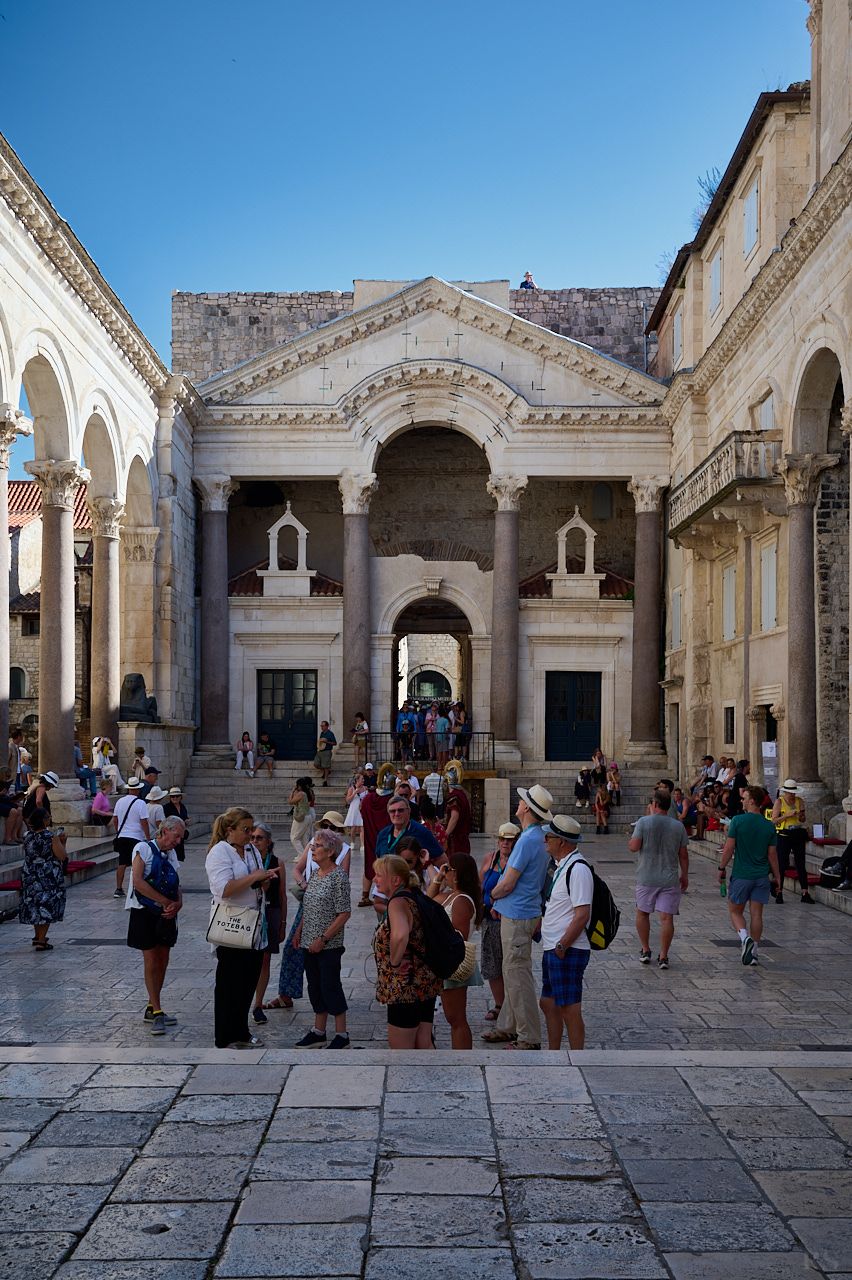
This is the most popular and crowded tourist place, i.e. the courtyard of Diocletian's Palace (built at the turn of the 3rd and 4th centuries).
To natomiast jest najbardziej popularne i oblegane turystycznie miejsce, czyli dziedziniec Pałacu Dioklecjana (powstał na przełomie III i IV wieku).
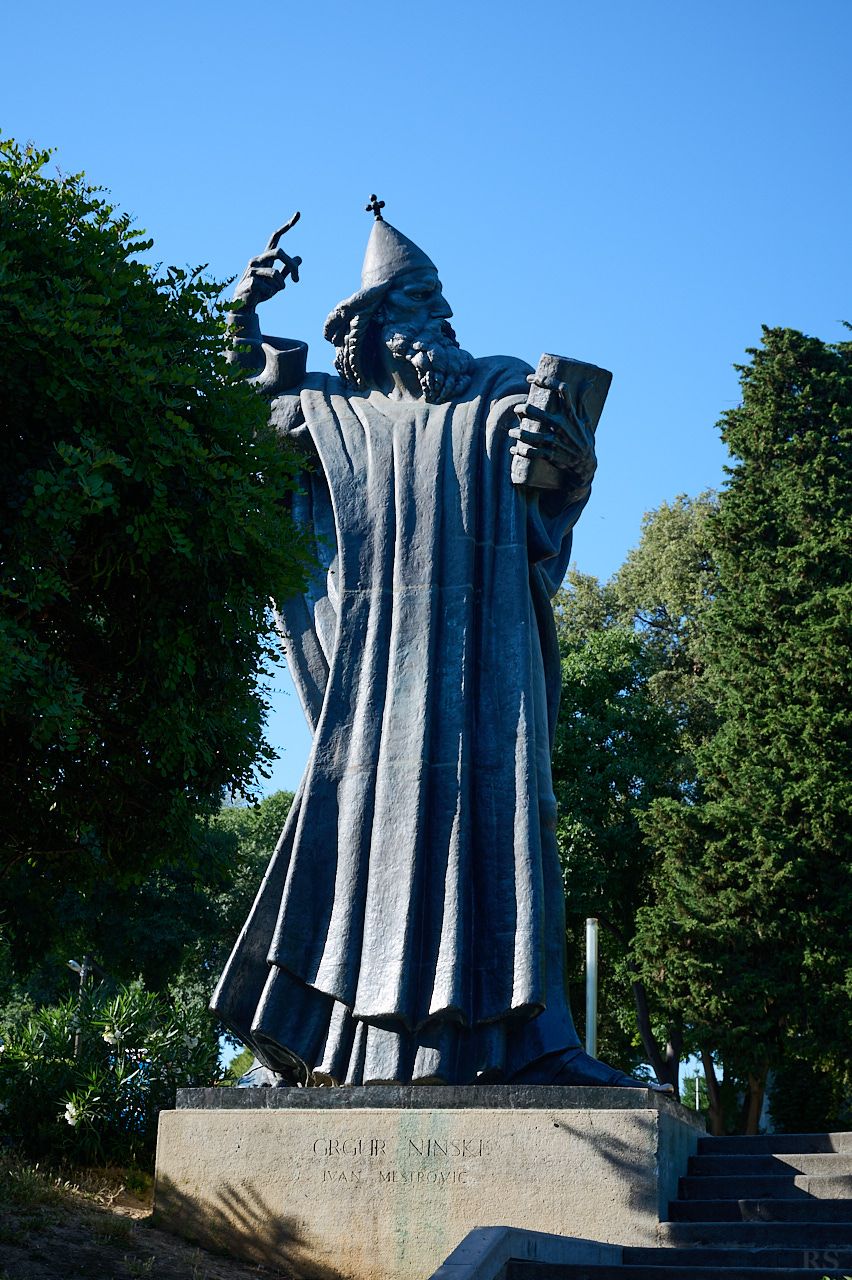
Outside the old town walls on the north side there is a large monument to Gregory of Nin ("Grgur Ninski"), a 10th-century bishop of Nin who introduced the Croatian language into the liturgy instead of Latin.
Poza murami starego miasta po północnej stronie znajduje się duży pomnik Grzegorza z Ninu ("Grgur Ninski"), czyli biskupa z Ninu z X wieku, który wprowadził do liturgii język chorwacki zamiast łaciny.
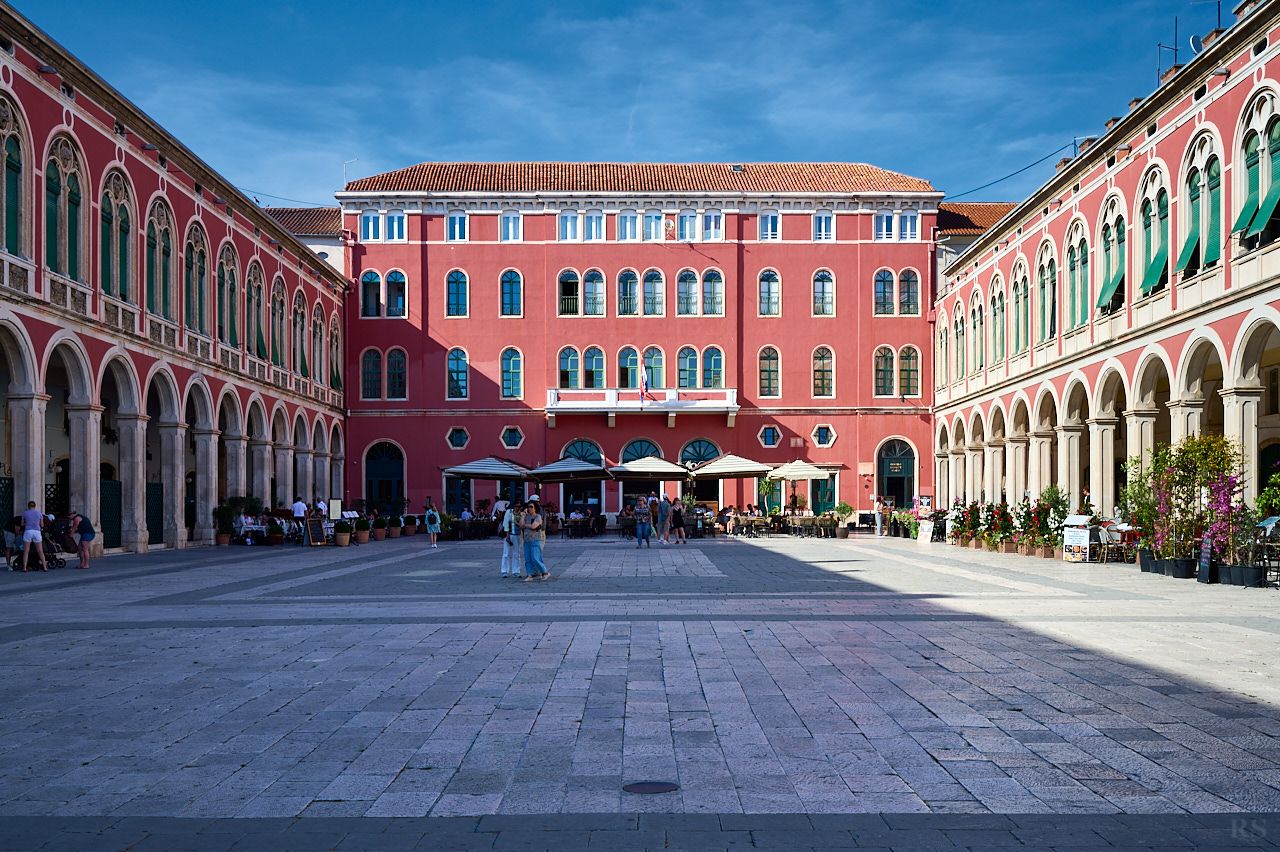
On the western side of the old town is the large Republic of Croatia Square ("Trg Republike"), surrounded on three sides by the wings of the palace. There were significantly fewer tourists here. For me, it was more impressive than the square by Diocletian's Palace.
Po zachodniej stronie starego miasta znajduje się duży Plac Republiki Chorwacji ("Trg Republike") otoczony z trzech stron skrzydłami pałacu. Tutaj natomiast było zdecydowanie mniej turystów. Dla mnie zrobiło większe wrażenie od placu przy Pałacu Dioklecjana.
Thanks for your visit and any likes and comments.
Dzięki za wizytę oraz ewentualne polubienia i komentarze.
All photos are my own. Camera: Nikon Z6II Lens: Nikkor Z 24-120 f/4 Editing: Capture One